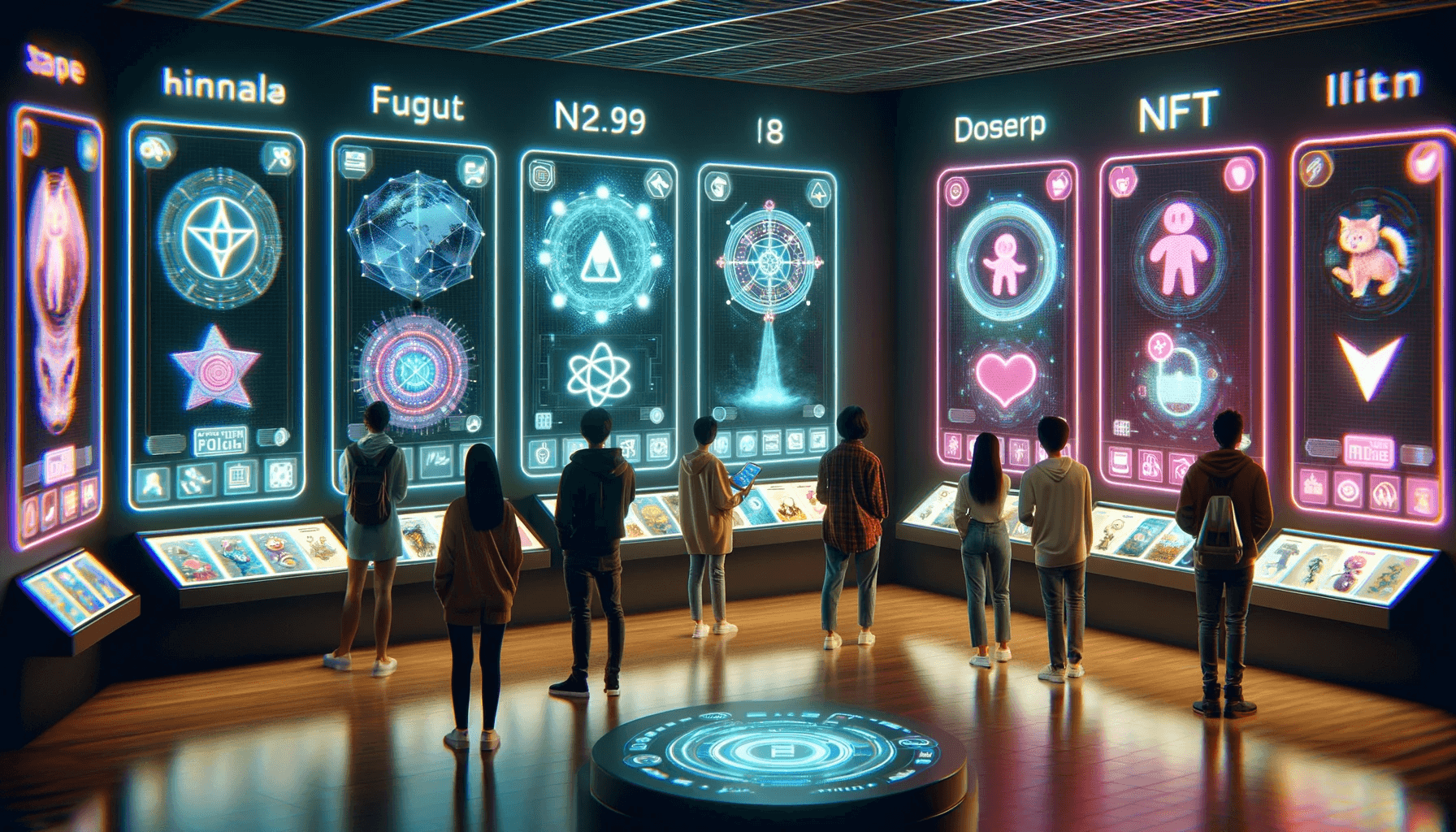The world of gaming has witnessed a significant shift with the rise of indie game development, particularly on mobile platforms. Indie games, developed by independent game developers or small studios, have gained immense popularity and recognition in recent years. But what exactly are indie games? Indie games are characterized by their unique and innovative gameplay mechanics, artistic styles, and storytelling approaches. They often prioritize creativity and experimentation over commercial success, resulting in a diverse range of gaming experiences for players. Independent game developers play a pivotal role in pushing the boundaries of game development and bringing fresh perspectives to the industry. The advent of mobile platforms has played a crucial role in fostering the golden age of indie game development. Mobile devices offer a convenient and accessible gaming platform for users, leading to a surge in the popularity of indie games. These platforms, such as the App Store and Google Play, have provided indie developers with a global audience and easy distribution channels, leveling the playing field and allowing small developers to compete with big publishers. The impact of indie game development goes beyond entertainment. Indie games have brought innovation and creativity to the gaming industry, offering unique gaming experiences that cater to diverse player preferences. The rise of indie games has also diversified the game market, allowing for a wider range of voices and narratives to be represented in the gaming landscape. This has created opportunities for small developers to make a mark in the industry and gain recognition for their talent and ideas. However, indie game development is not without its challenges. Discoverability and marketing pose significant hurdles for indie developers as they strive to compete in a crowded market. Monetization can also be a challenge, with revenue generation often relying on ads, in-app purchases, or premium pricing models. Indie developers face stiff competition from big publishers, who often have more resources and marketing power. Despite these challenges, indie game development continues to thrive, with emerging trends and success stories shaping the landscape. The rise of hyper-casual games, characterized by simple mechanics and addictive gameplay, has gained immense popularity among mobile gamers. Crowdfunding platforms and the support of the indie game community have also provided valuable resources and funding opportunities for indie developers. Success stories of indie games on mobile platforms, such as “Flappy Bird” and “Monument Valley,” demonstrate the potential for indie games to achieve widespread acclaim and commercial success.
Key takeaways:
- Mobile platforms have ushered in a golden age for indie game development, providing accessibility and affordability for independent developers to create unique gaming experiences.
- Indie game development on mobile platforms has led to innovation and creativity, diversifying the game market with fresh and exciting ideas.
- Despite challenges such as discoverability and monetization, the golden age of indie game development on mobile platforms offers great opportunities for small developers to succeed and make a mark in the industry.
The Rise of Indie Game Development
The rise of indie game development, a significant trend in the gaming industry, has brought diversity to the gaming landscape. Independent developers are increasingly creating innovative and unique games for mobile platforms due to advancements in technology and accessibility to game development tools. Lowered barriers to entry have played a crucial role in this surge. The success of indie game titles like “Minecraft” and “Flappy Bird” has served as inspiration for more individuals to pursue their own game projects. Consequently, players now have a wide range of creative and engaging experiences thanks to this rise in indie game development.
What are Indie Games?
Step into the world of indie games, where creativity and innovation thrive. In this section, we’ll dive into what defines indie games and what sets them apart from mainstream titles. Hold onto your controllers as we explore the unique characteristics that make indie games stand out, and uncover the pivotal role that independent game developers play in shaping this golden age of gaming on mobile platforms. Get ready to embark on a journey through the indie game landscape like never before.
Characteristics of Indie Games
Indie games are known for their unique characteristics that set them apart from mainstream games. Here are some key features that define the characteristics of indie games:
- Creative Freedom: Indie games are developed by independent game developers who have the freedom to explore unconventional ideas and artistic visions.
- Innovative Gameplay: Indie games often introduce innovative and experimental gameplay mechanics that challenge traditional gaming conventions.
- Personal Stories: Indie games often focus on personal narratives and storytelling, providing players with immersive and emotional experiences.
- Distinct Visual Style: Indie games embrace diverse art styles, ranging from pixel art to hand-drawn illustrations, creating visually striking and memorable game worlds.
- Minimalist Design: Many indie games adopt minimalist design principles, prioritizing simplicity and elegance in both visuals and gameplay.
These characteristics make indie games a refreshing and exciting alternative to mainstream titles. So if you’re looking for unique and creative gaming experiences, exploring the world of indie games is a must.
The Role of Independent Game Developers
The Role of Independent Game Developers is vital in the gaming industry, as they bring unique ideas and creative visions to life. They contribute in various ways:
- Innovation and Creativity: Indie developers are known for pushing boundaries and exploring unconventional gameplay mechanics, resulting in fresh and innovative games.
- Artistic Freedom: Independent developers enjoy the freedom to create games that reflect their artistic vision without the limitations imposed by big publishers.
- Diversity and Representation: Indie developers possess the power to tell diverse stories, representing underrepresented voices and experiences in the gaming industry.
- Experimentation: Independent game developers exhibit a greater willingness to take risks, enabling them to experiment and explore new genres and gameplay concepts.
- Niche Appeal: Independent games often cater to niche audiences, providing unique and niche experiences that are not often found in mainstream games.
These qualities highlight the crucial role of independent game developers in shaping the gaming landscape and offering players a diverse range of gaming experiences. It is important to support indie developers by seeking out and playing their games, as they greatly enrich the industry with their passion and creativity.
The Golden Age of Indie Game Development on Mobile Platforms
The Golden Age of Indie Game Development on Mobile Platforms has revolutionized the gaming industry. Mobile as a game platform has introduced unprecedented accessibility and affordability, making gaming a widespread phenomenon. App Store and Google Play have played pivotal roles in the success of indie games, providing a platform for developers to showcase their creativity and reach a global audience. Join us as we dive into this captivating world of indie game development, exploring the impact of mobile platforms and the incredible opportunities they offer.
Mobile as a Game Platform
- Mobile platforms have become a popular choice for gaming due to their accessibility and affordability. Here are a few reasons why mobile is a great game platform:
- Portability: With mobile devices, you can game anytime and anywhere.
- Touchscreen Controls: Mobile devices offer intuitive control options for a wide range of game genres.
- Variety of Games: Mobile platforms offer a diverse selection of games, catering to different tastes and preferences.
- Connected Experience: Mobile gaming allows for social interaction, with multiplayer options and leaderboards.
Mobile platforms have revolutionized the gaming industry, providing a convenient and immersive game experience for players. So, if you’re looking for a gaming platform that offers flexibility, a vast library of games, and social features, mobile gaming is the way to go. Enjoy gaming on the go!
Accessibility and Affordability
Accessibility and affordability are crucial elements in the surge of indie game development on mobile platforms. The accessibility of smartphones and tablets greatly facilitates the outreach of independent game developers to a broader audience. Moreover, mobile devices are more cost-effective compared to gaming consoles or high-end PCs, which makes them within reach for a wider range of players. Additionally, the reduced expenses of development tools and distribution platforms such as the App Store and Google Play also contribute to the economical nature of indie games. These factors have created new opportunities for smaller developers to craft unique and innovative gaming experiences that are both accessible and affordable for gamers worldwide.
App Store and Google Play
The App Store and Google Play are key platforms for indie game development. These platforms have provided independent developers with opportunities to showcase their games to a global audience. With millions of apps available on both the App Store and Google Play, discoverability remains a challenge. Both platforms offer various marketing tools and features to improve visibility. The App Store and Google Play offer monetization options such as in-app purchases and advertisements, allowing indie developers to generate revenue from their games. Pro-tip: To maximize success on these platforms, indie developers should carefully optimize their game’s metadata and utilize effective marketing strategies.
The Impact and Benefits of Indie Game Development
Indie game development has revolutionized the mobile gaming industry, paving the way for innovation, unique experiences, and opportunities for small developers. In this section, we’ll explore the impact and untapped benefits of this fascinating phenomenon. Discover how indie game development has unleashed a wave of creativity and diversification in the gaming market, serving players with refreshing and distinct gaming experiences. Brace yourself for a thrilling journey into the golden age of indie game development on mobile platforms!
Innovation and Creativity
Innovation and creativity are at the heart of indie game development, driving the industry forward with fresh and unique gaming experiences. Here are some ways indie games foster innovation and creativity:
| – Unconventional Concepts: | Indie developers are renowned for pushing boundaries and exploring new ideas that may not be considered mainstream. |
| – Experimental Gameplay: | They often take risks by introducing innovative mechanics and gameplay elements, challenging established norms. |
| – Artistic Expression: | Indie games showcase diverse artistic styles, allowing developers to express their creativity freely. |
| – Emotional Narratives: | Indie games excel at delivering compelling and thought-provoking stories, often tackling deep and meaningful themes. |
Fact: Indie games like “Journey” and “Undertale” have won numerous awards for their innovative and creative approaches, proving that small teams can make a big impact in the gaming industry.
Unique Gaming Experiences
Unique gaming experiences are the main attractions of indie games. These games often employ creative approaches and provide players with something distinct from mainstream titles. Here are a few examples of the extraordinary gaming experiences found in indie games:
- Experimental gameplay mechanics that challenge traditional gaming conventions, such as the time-loop mechanic in “The Outer Wilds” or the gravity manipulation in “Gravity Ghost.”
- Artistic and visually stunning aesthetics that create immersive and captivating worlds, like the hand-drawn art style of “Ori and the Blind Forest” or the pixel art of “Stardew Valley.”
- Emotional storytelling that delves into profound and thought-provoking themes, as observed in games like “Journey” and “Gris.”
- Innovative multiplayer experiences that foster cooperation, such as the cooperative puzzle-solving in “Keep Talking and Nobody Explodes” or the asymmetric multiplayer of “Among Us.”
- Player choice and consequence systems that offer non-linear narratives and multiple endings, like the branching storylines of “Undertale” or the decision-making in “Life is Strange.”
Diversification of Game Market
The diversification of the game market has had a significant impact on indie game development, leading to a broader range of unique and innovative gaming experiences for players. This expansion goes beyond mainstream titles and can be seen in several ways:
- Genre variety: Indie games have ventured into various genres, including narrative-driven adventures, puzzle games, and platformers.
- Artistic expression: Independent developers have embraced different art styles and aesthetics, resulting in visually captivating and distinct games.
- Experimental gameplay: Indie games often push the boundaries of traditional gameplay mechanics by introducing new concepts and gameplay elements.
- Niche interests: Independent developers cater to specific niche interests and underserved communities, providing games that resonate with particular audiences.
This diversification has enriched the gaming landscape by offering players a wider range of experiences to enjoy.
Opportunities for Small Developers
Small developers in the indie game industry have a wide range of opportunities to thrive and succeed. Here are some factors that contribute to these opportunities:
- Low Barrier to Entry: Opportunities abound for small developers in the indie game industry due to the availability of user-friendly game development tools and platforms. These tools make it effortless for developers to create and release their games without the need for a significant financial investment.
- Creative Freedom: Indie developers enjoy the creative freedom to explore unique ideas and experiment with innovative gameplay mechanics. This freedom allows them to provide players with fresh and engaging gaming experiences.
- Marketplace Visibility: The digital distribution platforms like Steam, App Store, and Google Play provide small developers with a global marketplace to showcase their games. This enhanced visibility increases their chances of reaching potential players.
- Community Support: Indie game communities are renowned for their robust support networks. These networks enable developers to collaborate, share knowledge, and receive feedback, which fosters growth and provides learning opportunities.
- Genre Diversity: Indie games cater to niche genres and experimental gameplay styles, creating opportunities for small developers to appeal to specific audiences. These games offer unique experiences that may not be found in mainstream AAA titles.
The Challenges and Obstacles
Are you ready to dive into the real struggles faced by indie game developers on mobile platforms? In this section, we will explore the formidable challenges and obstacles that these developers encounter. From the constant battle for discoverability and effective marketing strategies to the delicate balance of monetization and revenue generation, and let’s not forget the fierce competition posed by big publishers. Brace yourself, because we’re about to uncover the gritty side of the golden age of indie game development on mobile platforms.
Discoverability and Marketing
Discoverability and marketing play vital roles in the success of indie game developers in the competitive gaming industry on mobile platforms. Here are some crucial factors to consider for enhancing discoverability and implementing effective marketing strategies:
For more information on the Golden Age of Indie Game Development on Mobile Platforms, visit this external link.
- App store optimization (ASO): Optimize game titles, descriptions, and keywords to enhance search visibility on app stores.
- Social media presence: Utilize various social media platforms to engage with potential players, share updates, and generate excitement.
- Influencer marketing: Collaborate with influential gaming personalities to increase exposure and reach a broader audience.
- Community building: Foster a strong community of players through forums, Discord channels, and consistent communication.
- Partnerships and collaborations: Join forces with other developers or brands to mutually promote games and expand target audience.
- Press and media coverage: Establish connections with gaming journalists, bloggers, and media outlets to gain significant coverage and reviews.
Monetization and Revenue
Monetization and revenue are crucial aspects of indie game development, necessitating careful strategies to generate income. Here are some key considerations:
- Diverse revenue streams: Implementing a combination of monetization models such as in-app purchases, advertisements, and premium versions is essential.
- Engage players: Offer valuable content or perks to encourage players to make in-app purchases or subscribe to premium features and boost revenue.
- Ad placement: Integrate ads strategically to maximize revenue without compromising the user experience.
- Pricing strategy: Determine the optimal price point for premium versions, ensuring it aligns with perceived value and target audience to boost monetization and revenue.
- Community support: Cultivate a dedicated community and leverage crowdfunding platforms to generate additional revenue for game development.
By implementing effective monetization and revenue strategies, indie game developers can sustain their projects while delivering unique gaming experiences to players.
Competition from Big Publishers
When it comes to indie game development, facing competition from big publishers is a noteworthy challenge. These publishers possess substantial resources and a well-established market presence, posing difficulties for independent developers to compete. Big publishers often boast larger budgets for marketing and distribution, granting them the ability to capture more attention and visibility in the gaming industry. Additionally, they may have existing relationships with major platforms and distribution channels, affording them an advantage in reaching a broader audience. In order to overcome this competition from big publishers, independent developers must discover innovative methods to distinguish their games, cultivate a dedicated fan base, and effectively utilize social media and online platforms.
Trends and Success Stories
The mobile platforms’ indie game development industry is currently in a golden age, with several emerging trends and success stories. One of the trends is the rise of hyper-casual games, which are highly addictive and easy to learn. Another trend is the increasing popularity of location-based augmented reality games like Pokémon Go. Success stories encompass games such as Flappy Bird and Candy Crush, which have achieved massive popularity and financial success. These trends and success stories highlight the significant potential for indie developers to create innovative and profitable games in the mobile market.
Frequently Asked Questions
What is the Golden Age of Indie Game Development on Mobile Platforms?
The Golden Age of Indie Game Development on Mobile Platforms refers to a period in the gaming industry where independent developers have gained significant recognition and success in creating innovative and high-quality games specifically designed for mobile devices.
How does the casual community run environment contribute to the Golden Age of Indie Game Development?
The casual community run environment plays a crucial role in the Golden Age of Indie Game Development by fostering collaboration, support, and sharing of knowledge among indie devs. It provides a platform for indie developers to connect, exchange ideas, and receive feedback, ultimately leading to the creation of better games.
What challenges do indie developers face in the oversaturated market of mobile game development?
Indie developers face the challenge of an oversaturated market where numerous games, including good ones, struggle to gain exposure. With the increasing number of marketplace assets and competition, indie developers must find effective strategies to stand out and attract players to their games.
Is there an inevitable doom for indie developers in the current gaming industry?
While the market may pose challenges, it is not necessarily an inevitable doom for indie developers. The gaming industry is dynamic, and indie developers have the potential to overcome obstacles through creativity, innovation, and strategic marketing efforts. Success stories of indie games reaching great heights are proof that there is still room for indie developers to thrive.
Should I worry about the oversaturated market and the potential challenges as a potential indie developer?
While it is understandable to have concerns, worrying too much about the oversaturated market and potential challenges can hinder your progress as a potential indie developer. Instead, focus on improving your skills, creating unique and compelling games, and seeking opportunities for growth. By dedicating your time and efforts to game development, you increase your chances of success in the industry.
How can indie gamers transition into becoming indie developers during the Golden Age of Game Dev?
Indie gamers have the potential to become indie developers during the Golden Age of Game Dev by leveraging their love for games and their understanding of the gaming community. By exploring game development tools, learning programming and design skills, and collaborating with other indie developers, indie gamers can embark on a rewarding journey of creating their own games.






